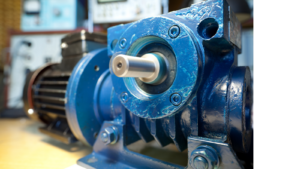05.25.2023
Properly Sizing, Selecting and Applying VFDs
 Have you ever struggled to determine why an electric motor in your facility continues to fail prematurely or why your variable-frequency drive (VFD) won’t run the motor at commanded speed? It could be due to a number of factors related to sizing, selection or how the products were installed or applied.
Have you ever struggled to determine why an electric motor in your facility continues to fail prematurely or why your variable-frequency drive (VFD) won’t run the motor at commanded speed? It could be due to a number of factors related to sizing, selection or how the products were installed or applied.
At Faith Technologies, our automation solutions team has technical expertise in VFD applications and electric motor control and can help you diagnose and correct those challenges to ensure your equipment and facilities are operating at optimal levels. Below are some of the things we consider when diagnosing system issues.
Sizing
We often refer to electric motors in terms of their horsepower rating. This makes perfect sense; the motor (when energized) produces a torque that rotates the shaft and, if sized/selected appropriately, it also provides enough torque to rotate the load that is connected to the motor shaft. The motor is doing work at a certain rate which is the definition of power, and this power output from the electric motor is measured by the following equation:

This shows that if either the torque produced or rotational speed of a given motor is increased, the horsepower produced by that motor increases proportionally. Electric motor manufacturers typically offer torque vs. speed characteristics for their motor designs, which allow users to understand the general capabilities of a given motor design.
Interestingly, we also often talk about VFDs in terms of their horsepower ratings, and VFD manufacturers rate them as such. However, the VFD is not producing torque or speed; it produces only voltage and frequency to the motor, which results in current draw (amps) as the motor inherently attempts to follow the applied electrical frequency. VFDs are electronic products comprised of electrical circuits and are rated on volts and amps, not horsepower. Choosing a 20Hp VFD to run your 20Hp electric motor will work in about 95% of all cases. Occasionally, whether due to a unique motor design, load characteristic or electrical characteristics of the motor circuit, this method fails and can be an expensive mistake causing equipment damage and/or production downtime. Working closely with the vendor/supplier or an application expert to select the appropriate size/rating VFD is advised.
Product Selection
Not all VFDs are created equal. Controlling a centrifugal fan or pump within +/- 5% of commanded speed is far less complex than matching the roll surface speeds of a web-handling machine and requires far different VFD products and accessories. Items such as coordinated motion control, encoder feedback, load sharing, starting torque requirements, acceleration/deceleration profiles and speed/torque control accuracies are examples of application-specific factors that matter in the selection of the VFD product. Understanding the control performance requirements of the application and capabilities of a given VFD product are vitally important in the success of the application.
Application and Installation
A VFD is an electronic device and is sensitive to the environment in which it’s installed and the power system to which it’s connected. It also has an impact on the electrical power system and can create noticeable levels of current/voltage harmonics and other electrical phenomena such as common mode voltage/current, emitted electromagnetic noise and reflected wave voltages (at the motor). Manufacturers publish installation guidelines and best practice documents to help prevent potential pitfalls that may occur with the installation and operation of variable frequency drives. Follow these guidelines, consult with the vendor/supplier and leverage experienced professionals like Faith Technologies to ensure your project remains free of nuisance issues caused by misapplication of VFD products.
Faith Technologies is a division of FTI, enabling end-to-end solutions with a national presence and a diverse range of capabilities that have been developed through years of experience in various manufacturing settings. Our power control experts have decades of combined experience in electric motor control applications, and we’d love to support your next project – contact us today!
If you enjoyed this blog article, please subscribe to stay up to date on the latest industry news from our experts at Faith Technologies.



